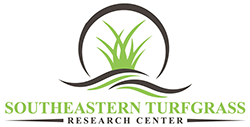Sprig Installation
Our Bermudagrass sprigs are grown from genetically pure planting stock and have been nurtured in fertile soils and maintained to strict specifications in order to provide our customers with top quality sprigs that are uniform and provide excellent results. As a result of our sandy soil, our sprigs are clean and free of undesired contaminants. We offer a variety of turf grass selections that will suit most needs in our region.
At GrassMasters we have a selection of four sprig planting machines, each designed and manufactured for a specific type of sprig planting to provide the best results possible. We offer broadcast planting, which is normally used for establishing new turfgrass areas, and rowplanting which allows for an existing golf course or athletic field to introduce new improved grasses without major renovations to the soil surface. Our Sprig planting equipment has been designed to insure fast grow in with very little disturbance to the existing soil surface.
GROW IN SPECIFICATIONS PRIOR TO PLANTING
SITE PREPARATION
Eradication of existing plant material. An application of Glyphosphate (Round-up) should be applied at least 10-14 days prior to sprig planting. If the area is to be rowplanted, and the customer would like to keep the existing grass, we recommend a growth regulator application.
SOIL PREPARATION
A new planting site will usually require the existing soil be worked up to a depth of at least 3-5 inches. The finished seed bed will have at least 1-2 inches of loose soil at the surface to allow for proper sprig placement. It is important to provide a good seed bed for the sprigs because this will affect establishment, maintenance, and quality of the turfgrass area.
Rowplanting site. We commend that the area to be rowplanted be cultivated by a means of aerification using a coring or spiking unit prior to sprig planting. This will reduce compaction and provide for greater water retention.
PRE-PLANT FERTILIZATION
We recommend that soil samples be taken, prior to planting, and analyzed to provide the proper information concerning fertilization needs. It is strongly recommended that the soil pH and cation exchange capacity be determined for use as a guide to correct soil conditions. Many soils in our area have a low pH which can have a detrimental affect on the performance of the turfgrass. Generally, soils are limed and complete fertilizer such as 10-24-20 is applied at a rate of 300 lb. per acre.
PRE-EMERGENCE HERBICIDES
We recommend an application of Ronstar prior to sprigging. This can be done using the recommended rates as suggested by the supplier of the Ronstar If a herbicide other than Ronstar is to be used, we strongly suggest that the label is read to insure that it will not inhibit the growth and performance of the sprigs. If a chemical other than Ronstar is to be used, please call us prior to the application of the herbicide.
POST PLANTING RECOMMENDATIONS
SPRIG PLANTING
If you are planting your own sprigs, attempt to plant the sprig to a depth of 1-2 inches with at least 1/3 of the sprig remaining above the soil surface. After you plant your sprigs, it is suggested that a roller be used to seal the soil surface and firm the soil surrounding the sprig. We normally suggest a rate of 10 to 20 bushels per 1000 sq. feet. The higher the rate, the faster the fill in.
If we are planting your sprigs, please don't hesitate to ask questions or voice concerns.
WATERING
This is the most important factor in the planting process. It has been estimated that waiting more than 1 hour to water after planting can result in the loss of as much as 30% of the planted sprigs. The sprigged area should be watered immediately following sprigging. If possible water the as much as possible without causing run off. Three to four application of water daily may be needed to keep the surface moist during the first week. Watering can be reduced gradually until the sprigs have filled in. Daily watering is normally required for the first 2-3 weeks. After the grass is established avoid watering too often. Irrigate thoroughly, to a depth of 4 to 6 inches, and infrequently. Too much water results in shallow rooting and can increase the possibility of winter kill. Bermudagrass will require 1 to 1.5 inches weekly.
FERTILIZATION
Fertilization will determine how quickly the sprigs fill in. For faster grow in, one application of 1/2 lb. actual nitrogen per 1,000 sq. ft. per week, or 1 lb. every two weeks, until the area has completely filled in. After fill in is complete, a full analysis fertilizer (24-6-12) should be applied monthly during the growing months of April through September. Reduce nitrogen levels at least six weeks prior to the first frost and increase the level of potash. We do not recommend fertilizing after the first frost date in the fall. Soil analysis and tissue sample analysis can be used as tools to fine tune your fertilization program.
MOWING
Begin mowing 2-3 weeks after sprigging. Gradually lower your mowing height to your desired height, but do not remove more than 1/3 of the leaf during any one mowing. It is recommended that bermudagrass be allowed to reach a height of 1.5 to 2 inches or higher prior to dormancy to better protect against winter kill during the establishment phase. Raise the mowing height at least 3-4 weeks prior to your first frost.
HERBICIDE APPLICATIONS
Herbicides can normally be applied 1 month after the planting to control weeds and any insect infestations. Always refer to herbicide label.



